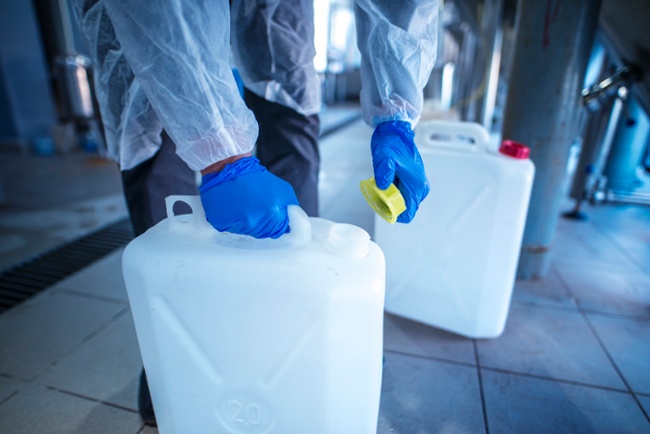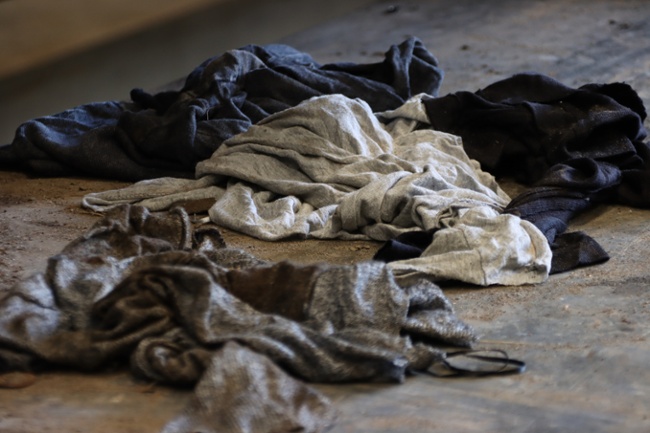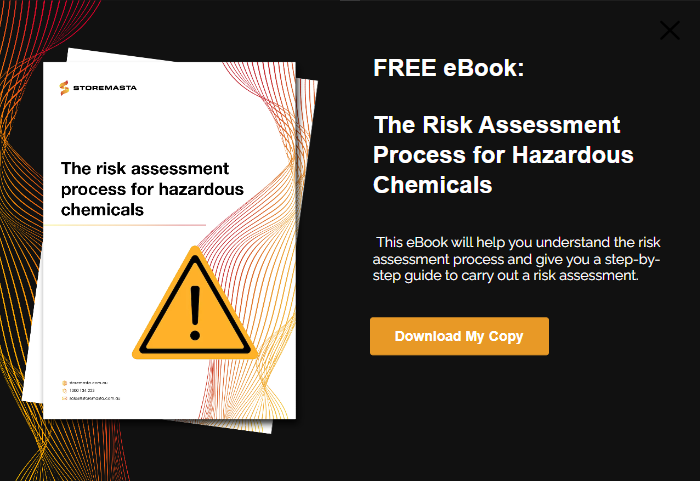Managing hazardous chemical waste in the workplace is a crucial, yet sometimes overlooked, measure which is necessary for safety and compliance. But what kinds of waste may be generated in your business – and what safety precautions do you need to take? This blog offers a general overview of managing chemical waste onsite, so you can control hazards which may arise during the waste collection process.
What Is Chemical Waste in the Workplace?
Chemical waste in a business refers to any unwanted or unused chemicals generated as a byproduct of industrial processes, laboratory work, or other business activities.
These chemical waste products may affect human health, property or the environment if not managed and disposed of properly.
Chemical waste can come in various forms, including liquids, solids, gases and their byproducts. This waste may have a range of hazardous properties, whether they are toxic, flammable, corrosive, oxidising and/or reactive, which need to be controlled to keep people and place safe.

Chemical waste can include empty containers, soiled rags and items, byproducts, residues, expired chemicals and more.
If your workplace has generated hazardous chemical byproducts or waste, you must manage the risks of those substances, as per Safe Work Australia’s Code of Practice ‘Managing Risks of Hazardous Chemicals in the Workplace’.
REMEMBER: Section 13 of your safety data sheet lists the specific disposal considerations for your chemicals.
Examples of Waste Generated by Industry
Some general examples of chemical waste generated by different industries may include:
- Manufacturing Waste: Byproducts and residues from manufacturing processes, which may include leftover raw materials, reaction byproducts, or contaminated equipment.
- Cleaning and Maintenance Waste: Used chemicals from cleaning operations, such as solvents, detergents, and degreasers.
- Laboratory Waste: Unused or expired chemicals, residues from experiments, and contaminated materials.
- Construction and Renovation Waste: Chemicals from construction and renovation activities, such as paint, adhesives and sealants.
Why is Hazchem Waste Management Important for Businesses?
Every workplace that has chemical waste must act responsibly to meet WHS obligations and regulatory compliance.
Without adequate waste management procedures and practices, businesses can risk human health, environmental damage, and property destruction or degradation. In addition to this, failing to properly accommodate and dispose of hazardous chemical waste can result in non-compliance penalties and large fines.
DID YOU KNOW? Hazardous chemical removal and disposal is regulated. Therefore, it must be tracked and reported to relevant authorities. Certified hazardous chemical waste transporters should have waste tracking and reporting available for clients.
What is Proper Waste Management?
Proper management includes identifying, segregating, storing, and disposing of chemical waste according to local, state, and federal regulations. This often involves working with licensed and authorized waste disposal services to ensure the safe and environmentally sound disposal of hazardous materials.
IMPORTANT: When disposing of empty containers, uncap, puncture and crush all rinsed containers. Never burn empty chemical containers. Always check with your local authority about collection requirements.
How Can Workplaces Improve Chemical Waste Safety?
Businesses are encouraged to implement practices that minimise the generation of chemical waste.
This may include:
- Adopting greener habits and technologies
- Substituting hazardous substances with less harmful alternatives
- Recycling chemical waste, if possible
- Recycling or reusing chemical containers, gas cylinders etc. if possible
- Conducting training and revisions for staff who are working with chemical waste
We’ll look at some of the simple steps that you can take to improve chemical waste safety in your own business.
Labelling Chemical Waste Containers
Australia’s WHS Regulations states that workplaces must label waste products if it’s likely that the waste product is a hazardous chemical.
The waste product must be packed in a container with a label written in English that includes:
- Product identifier
- Name, Australian address and business phone number of the manufacturer or importer
- Hazard pictogram and hazard statement consistent with the correct classification of the chemical
Waste Segregation
Segregate chemical waste based on its compatibility, physical state, and hazardous properties.
Use separate containers for different types of waste and follow the segregation guidelines, just as you would with the chemical substance in its original form.
Don’t Forget Chemical Soaked Rags
It’s important to remember that your chemical-soaked items, such as rags, chemical booms or pads, can create hazards if not stored and disposed of properly. Depending on the type of chemical that you’re cleaning up, it’s a good idea to ensure these are kept in a waste bag with tie while your waste management team prepare disposal.
However, if you’re dealing with flammable or combustible substances, you need to take further precautions. Refer to your safety data sheet for information on waste disposal. Secure your rags (ensuring they don’t mix with other chemicals or waste) in a sealed metal container that’s filled with water. This will decrease the risk of combustion or ignition of soiled rags.

Cleaning chemicals, and the rags or equipment required for the job, may also be deemed as hazardous chemical waste.
Keep Records of Chemical Waste
To assist with the effective management of your onsite waste, keep an updated inventory of all chemicals used and their quantities. This will help you with the coordination of your waste disposal, given that different substances and quantities may require different waste disposal methods.
Inventory Control of Chemicals and Waste
Furthermore, it’s important to control the use of hazardous chemicals through substitution with less hazardous alternatives – as well as tight controls on chemical inventory. Purchase chemicals in quantities that can be used before their expiration date, and always check stock to make sure that you’re not using expired chemicals.
Chemical Waste Storage
Store chemical waste in a designated area with proper containment measures to prevent spills or leaks. Just like the storage of dangerous goods in the workplace, you must also ensure that all hazards and incompatibilities are controlled, so that your waste storage areas are not a risk to your operations.
Regularly inspect storage areas for signs of deterioration or leaks, as this will affect the safety of your site – as well as the safety of those transporting and disposing of the waste.
Some basic tips include:
- Store chemicals in well-ventilated areas with spill containment measures
- Use appropriate storage containers and cabinets, and ensure they are labelled
- Segregate chemicals based on compatibility to prevent reactions
- Designate dedicated stores for each DG class, ensuring they’re placarded
Training
Train employees on the proper handling, storage, and disposal of chemicals. Ensure that employees are aware of the potential hazards and emergency procedures related to the chemicals they work with. To minimise chemical exposure, make sure that they’re issued with the correct personal protective equipment for the chemical waste they’re handling and the tasks they are performing.
Disposal
Contract with licensed and authorised waste disposal services for the chemical waste. Keep documentation of disposal processes, including manifests and certificates of disposal.
“In addition to complying with relevant waste legislation, a person undertaking activities with waste that is also classified as a ‘dangerous good’ under Commonwealth legislation must also comply with dangerous goods requirements. “ – EPA NSW
Emergency Preparedness
Have an emergency response plan in place, including procedures for spills, leaks or accidents involving chemicals. Make sure your emergency response plan incorporates your worksite, as well as your waste disposal areas and processes.
Compliance
It’s necessary to comply with the relevant authorities that relate to your organisation. Stay informed about local, state, and federal regulations regarding the handling and disposal of chemical waste – and, when in doubt, speak to your local waste management authority to determine how to dispose of each chemical waste product in the safest and most compliant way.
Regular Audits and Inspections
Conduct regular audits and inspections of all areas of the business, both indoors and outdoors – not limited to waste storage and disposal areas. This will help you see where waste is accumulating or not being properly managed, as well as identifying hazards that may be presented by new (and uncontrolled) forms of waste due to new work practices or new onsite chemicals.
Before you bring a new chemical onto your site, make sure you have enabled the right chemical storage, handling and waste management procedures so staff know how to work with the substance safely.
By following these guidelines, workplaces can effectively manage chemical waste, reduce risks, and contribute to a safer and healthier environment. Always consult with local environmental agencies and regulatory bodies to stay updated on specific requirements in your region.
Reduce Risk with your Chemicals
To control risks with your chemicals and their waste products, it’s important to first start with an in-depth risk assessment of your site. This will allow your business to identify hazards, assess the level of risk and then start the process of choosing, implementing and maintaining the relevant controls.
If you’d like some assistance with risk management, why not download our free eBook to find out more about the risk assessment process? Our helpful resource will guide you through the process, so you can accurately assess chemical risk in your organisation. Get your copy now to learn more.

Living life by the 4 C’s of marketing – communication, coffee, compliance… and more coffee – Leisa Andersen is Storemasta’s Content Marketing Manager. When she’s not writing, you’ll find her enjoying all the good things in life, including shopping, travel and gluten free donuts.

